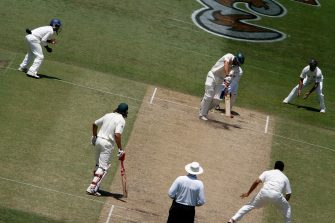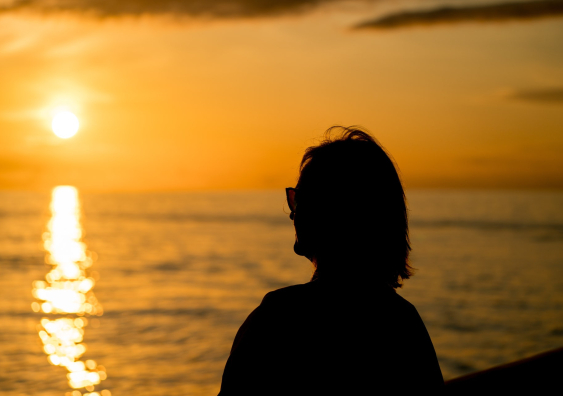Attending outdoor sporting events can be life-threatening. Amid soaring temperatures, event organisers need to take extra care – not just for athletes, but also for officials, spectators and volunteers.
The consequences of extreme heat exposure range from dehydration to heatstroke and even death. National Rugby League player Keith Titmuss died in 2020 due to “exertional heat stroke” following an excessive pre-season training session. Scorching temperatures also disrupted the 2019 Australian Open and wreaked havoc during the 2023 Sydney Marathon.
In Paris, the 2024 Summer Olympics will proceed with no air conditioning in the athlete’s village. To reduce greenhouse gas emissions, organisers chose alternative cooling measures such as insulation, double-glazing, fans and pumping cool water through the floor. Unconvinced, the Australian Olympic Committee is buying portable air con units just in case. Athletes from poorer nations are expected to just keep their curtains shut.
In the lead-up to the Brisbane 2032 Summer Olympics and other major sporting events in Queensland, the state government wants to prepare for extreme heat. Our new research explores this health hazard, the strategies recommended to reduce heat exposure at sporting events, and who is responsible for ensuring these strategies are put in place. Here we offer practical tips for all involved. We’re going to need them more than ever as the world warms.
What we did and what we found
We conducted an international review of research published between 2010 and 2023 to determine the current state of knowledge in this area.
Our systematic approach honed in on 40 peer-reviewed articles about heat at major sporting events. These were events held in large venues that attracted local, domestic and international spectators. The recommendations fell into six themes: planning, mitigation strategies, medical, policy, education and research.
A consistent pattern of heat-related challenges emerged. The rate of heat-related illness increased along with the temperature. Certain groups of people were more vulnerable to heat. Athletes participating in endurance events such as long-distance running were at higher risk than those participating in short-duration sports involving throwing (javelin, discus) or jumping (high jump, long jump). The diverse needs of those with multiple medical conditions and differing abilities including Paralympic athletes also warrant special consideration.
We found the significant health risks of heat should be considered before, during and after major sporting events. Individuals, coaches, officials and organisers all have a role to play.
Our findings can inform evidence-based strategies to protect the health of those attending and competing in such events now and into the future.
It’s not just about athletes
While athletes may have prepared to compete in hot conditions, using technology such as cooling vests or cold-water immersion, spectators are less likely to deliberately prepare their bodies for extreme temperatures. But there are plenty of things we can all do.
We can drink plenty of fluids, seek shade and use sun protection. Ideally, venue management will have provided access to drinking water, shady spaces and cooling (misters, fans or air conditioning). All requires careful planning and thoughtful construction.
Organisers need to decide what time to run each event, what temperatures will trigger heat policies (such as pushing events to a cooler time slot), whether rules need to be changed in the event of extreme heat (such as more or earlier break times), and what measures need to be in place to protect officials, spectators and volunteers.
Top tips for spectators
Here are some practical tips you can use to reduce heat-related risks when extreme heat strikes:
think about where your seat is located and whether there will be any shade, or whether you will be directly exposed to the elements
find out whether you can come and go, or attend the event later in the day – where possible, avoid events timed for the hottest part of the day
wear light-coloured, loose-fitting clothes and a hat
see if you can bring your own water bottle into the event and refill it, and make sure you are well hydrated before, during and after the event
avoid caffeine and alcohol as these drinks can make your more dehydrated
check what event organisers have planned for extreme weather such as heatwaves.
A warning to event organisers
A great deal has changed since Australia hosted the Sydney Olympics at the turn of the century.
There are no excuses in 2024. All sports and sporting events should have a heat policy that addresses players, spectators and officials. Sports Medicine Australia’s Extreme Heat Policy is a good example.
For major sporting events, engaging with health services should be part of the planning process. Then they can prepare for the possibility of multiple people presenting with heat stroke.
At the event, medical teams should be skilled in recognising the warning signs of heat related illness, as well as diagnosis and treatment.
With extreme heat events becoming more common worldwide, sporting bodies must be prepared to alter scheduled events (including the time, location, scheduled breaks, and so on) as required.
Let’s ensure outdoor sporting events can continue in a warming climate.
By working together, we can provide safer, more enjoyable experiences for all involved.![]()
Hannah Mason, Research assistant in Public Health, Medical, and Veterinary Sciences, James Cook University; Amy Peden, NHMRC Research Fellow, School of Population Health & co-founder UNSW Beach Safety Research Group, UNSW Sydney; Anthony Leicht, Professor in Exercise Science, James Cook University; Jemma King, Lecturer, Public Health, James Cook University, and Richard Franklin, Professor of Public Health, James Cook University
This article is republished from The Conversation under a Creative Commons license. Read the original article.







